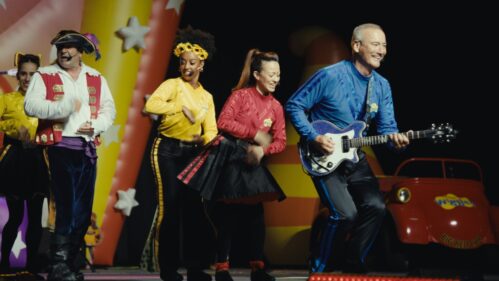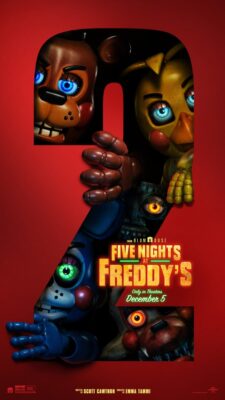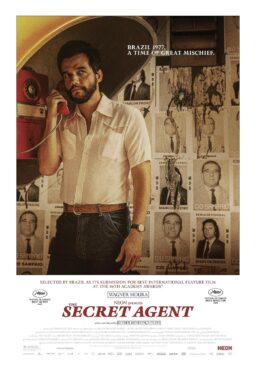Vincent Canby of the New York Times selected “Four Friends” as one of the year’s 10 best films. In the Los Angeles Herald Examiner, it was described as “an amazingly bad movie.” It has been elsewhere praised as a masterpiece and damned as cornball dreck, and somewhere in the middle of all this commotion there resides, I believe, a small film treasure that is about as good as this sort of film can be.
This sort of film? “Four Friends” belongs to a familiar film genre. It’s a coming-of-age movie, one of those films of bittersweet memory in which the loss of your first sweetheart coincides with the discovery that the adult world is mean, venal and small-minded, and you’re part of it. The director of “Four Friends” is Arthur Penn, and its screenwriter is Steve Tesich, and both of these men have worked in the genre before.
Penn directed “Alice's Restaurant,” that 1969 hymn to a hippie world that was already coming apart at the seams, and Tesich wrote “Breaking Away,” the wonderful 1979 film about four other friends in Bloomington, Ind. Penn is best known as the director of “Bonnie and Clyde,” which was also, come to think about it, a coming-of-age movie, in which two young people enter a life of crime in all naiveté, and leave it punctured by machine-gun rounds.
“Four Friends” is the story of three young men and a woman who graduate from high school in East Chicago, in 1961. They would have been juniors, then, when I was a senior, and I am personally certain that they knew all the words to “Wake Up, Little Susie,” although the movie omits such details. They would have held their 20th class reunion last summer (the subject for a second film, if Penn and Tesich are interested).
The movie’s hero is named Danilo, he immigrated to America from Yugoslavia with his parents, and Tesich says he is a more or less autobiographical creation. The heroine is Georgia, a self-dramatizing, romantic eccentric who seems to be a cross between Janis Joplin and Alice in Wonderland, and who tends to live her life in the third person, doing things because someone like her should be doing things like that.
The movie follows these characters for most of the next decade, through chapters in American history symbolized by the Beatles, Haight-Asbury, Vietnam and LSD, and bookended by John Fitzgerald Kennedy and Richard Milhous Nixon. The story sort of begins with Georgia’s adolescent avowal that she wants to sleep with Danilo, and ends a long time later when the two of them finally do fall properly in love. In between, Georgia also passes through various forms of love with the other two friends, and Danilo survives a doomed marriage.
They all also (and here is where the critics really jump up and down on the movie) live through a virtual catalog of 1960s social history, until, if you regard the movie in a certain light, it’s a guided tour of the decade. Does the movie touch too many bases? I don’t think so, you see, because I lived through that decade and touched almost all of the same bases myself, and so did a lot of us: In the 1960s, as we used to say, everybody went through a lot of changes.
Since “Four Friends” is based on Tesich’s own memories and fantasies of the decade, it is permitted, I think, for me to view it in an autobiographical light. One particularly harsh critic of the film was particularly scornful of an early scene in which several friends march home in the dusk after high school band practice, playing their instruments on the neighborhood sidewalks like caricatures from a Fellini movie. Is this scene fantastical? Not at all. Kids in the Urbana High School band often marched down Washington St., serenading the neighborhood after band practice. I saw it, I remember it, and so I believe it in the movie.
I also believe (and this Is crucial) in the character of Georgia, who is played by an 18-year-old named Jodi Thelin In the movie. One negative review of the film attacked the performance as too mannered, too knowing, and, worst of all, too theatrical — because, of course, how would a 17-year-old girl in East Chicago, Ind., ever get to be theatrical, and how would she have even heard of Isadora Duncan, let alone adopt her as a personal hero?
As someone who grew up in the Midwest, I am just as amazed as anybody that an occasional corn-husking clodhopper (or, in the case of East Chicago kids, a first-generation greaser) ever got to be theatrical or learned who Isadora Duncan was, but kids did get into that stuff, and maybe more so in those days than now, because we read more and watched less TV. Every high school had a couple of kids who have somehow penetrated the hick/bourgeoisie mentality to reach through to the mysteries of the arts.
In my senior class, for example, there was this tall, curly-headed kid who played the lead in all the plays and could do accents and had read every word of Eugene O'Neill. Not only did he go to high school in Urbana, he was born in Peoria, and that’s gotta be worse even than East Chicago, right? Am I making him up? No. His named was David Stiers. He added an “Ogden” in the middle and is one of the stars of “MASH.” As a high school kid, he was exactly the same kind of anarchic freewheeler that Jodi Thelin makes out of Georgia in “Four Friends.” And he was about as impossible to endure, sometimes, too, although he had a way about him that neutralized ordinary high school hallway hazing: You could tell he was onto something.
I believe that one of the charms of “Four Friends” is Tesich’s ability to remember accurately how corny, self-dramatizing, romantic, foolish and idealistic kids were In the 1960s, and still are today, and to write those memories down without filtering them through a lot of sensible middle-age revisionism. Just because we wouldn’t behave today as we did in 1963 is no reason to deny how we did behave, and still less to deny that anyone would have ever behaved in such a way.
Tesich remembers. I remember. I remember that yes, it was possible, In 1960, to read a novel by Thomas Wolfe about a young poet who was in such artistic and spiritual and sexual agony that he strode about a campus uttering wild goat cries at the moon — and, yes, it was possible to utter wild goat cries at the moon in insane adulation of such an image. It is still possible today. I’II bet there are more wild goat criers around than you would believe. And I’ve got news for you. I uttered wild goat cries at the moon myself on at least
two occasions, both times to impress young women with my poetic soul (which is exactly the sort of motivation the Georgia character in “Four Friends” would not have to have explained to her).
I have some notes from interviews with Arthur Penn, Steve Tesich and Jodi Thelin. I had lunch with Penn and Tesich in Los Angeles, but it was a fairly chaotic occasion, with Tesich’s arriving late and Penn’s having to leave early, and although I wrote down a lot of quotes and facts and figures and profound insights, what I really remember is little more than a few anecdotes.
“Some lady has shown up again In Steve’s life,” Penn said at one point.
“Long lost love?” I asked.
“Not exactly.” said Tesich. “I was paged in the lobby of the hotel. And there was this woman sitting there who had gone to high school with me. She heard my name and thought, how many Steve Tesiches can there be? So she went to the house phone and asked for me and we had a reunion. The thing is, I believe In things like that. I believe in people sitting in hotel lobbies and happening to hear a name being paged. When as a writer, you start denying that wonderful things like that happen in life, you’re left with some very joyless realism on your hands.”
Another anecdote has to do with how Jodi Thelin was cast for the film. Actually, there are two anecdotes, hers, and Arthur Penn’s. They tell quite different stories. I heard Penn’s in Los Angeles, and then I asked Thelin for her version during an interview in Chicago:
Jodi Thelin’s version: “I grew up in St. Cloud, Minn., although, if I would have thought about it at the time, I probably would have left. I did leave when I was 15. I was emancipated. There Is a thing in Minnesota where a teenager can get a lawyer and get her parents to say, yes, she is a responsible adult now, and you can be on your own, even at 15. I felt I was above St. Cloud. It was time to move on.
“After my emancipation, I moved to Minneapolis-St. Paul. I went to the Minneapolis Children’s Theater School, where I did 16 shows in two years. Then I toured with the Minnesota Renaissance Players, and in 1979, I moved out West to Hollywood. I was referred to the American Theater Arts Company, I lived for a while at Fountain and Vine until the landlady started ripping off all of my clothes. And then I moved into the theater building itself, with my sleeping bag. I was waitressing at the Hasty-Tasty on Hollywood Blvd.
“I went up for the part in ‘Four Friends,’ and took six interviews with Arthur Penn and read some monologues for him from ‘All the Way Home,’ but he thought I was too young. I opened in a play by Brendan Behan, and was described by one critic as ‘the find of the year,’ and Arthur had second thoughts and decided to screen-test me. I did the scene where I’m standing at the window moaning with desire. And I got the job.”
Arthur Penn’s version: “We asked the guy who cast for me if he had anybody new and off the wall. He said he had this kid who had just come in from the Midwest, she was 16, 17 years old. We read her, but we knew we couldn’t build a picture around an untried 17 year old. We had to do screen tests so we invited her back to play opposite some of the men we were testing, thinking, what the hell, we could give her the film, she could use it for auditions. We weren’t seriously considering her. Until we saw the screen tests, and she blew us out of the room, she bad such a presence. There was no question about it. She got the job.”
And it was much later, Penn said, that he learned such details as that Jodi Thelin had gone into court to be emancipated so she could pursue a life in the theater, although that was exactly the sort of thing that Georgia, in the film, would have done.
And so Penn took his plunge with an unknown 17 year-old, and shot the movie on location in northern Indiana, and told some of the story and some of the memories of Tesich, who did come over from Yugoslavia with his parents, and who grew up in some of the same East Chicago locations where the movie is filmed.
And they made a movie that I feel does indeed remember well and accurately those days and the attitudes of young people in the 1960s (and the ways In which, during the decade, those people grew older, wiser and more sad). They did It because they had the courage to refuse to rewrite the truth to make it plausible.
A that only leaves — well, what about that woman in the hotel lobby? Twenty years ago, was she the original Georgia?
“That would be asking too much,” Steve Tesich said.











